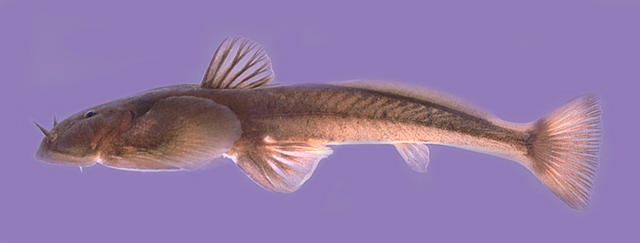|
Dorsal spines (total): 0-0; Dorsal soft rays (total): 6-7; Anal soft rays: 4-4; Vertebrae: 35-36. Belongs to the Oreoglanis delacouri species group as it lacks a distinct median notch on the posterior margin of the lower lip. Can be distinguished from other members of the genus by the following combination of characters: maxillary barbel with rounded tip, dentary tooth patches separated by approximately one-quarter their width, tip of pectoral fin reaching pelvic-fin origin, body depth at anus 10.9-13.0 % SL, and adipose fin confluent with upper procurrent caudal-fin rays, caudal peduncle length 20.3-24.4 % SL, caudal peduncle depth 5.4-6.3 % SL, caudal peduncle depth 3.31-4.23 times in its length and an emarginate caudal fin (Ref. 83406).
Description: Dorsal fin rays i,5, i,5,i or i,6; anal fin rays i,3; pectoral fin rays i,18, i,18,i , i,19 or i,20; pelvic fin rays i,5. Paired fins greatly enlarged, forming an elongate ovoid adhesive disc with body (Ref. 83406). |

